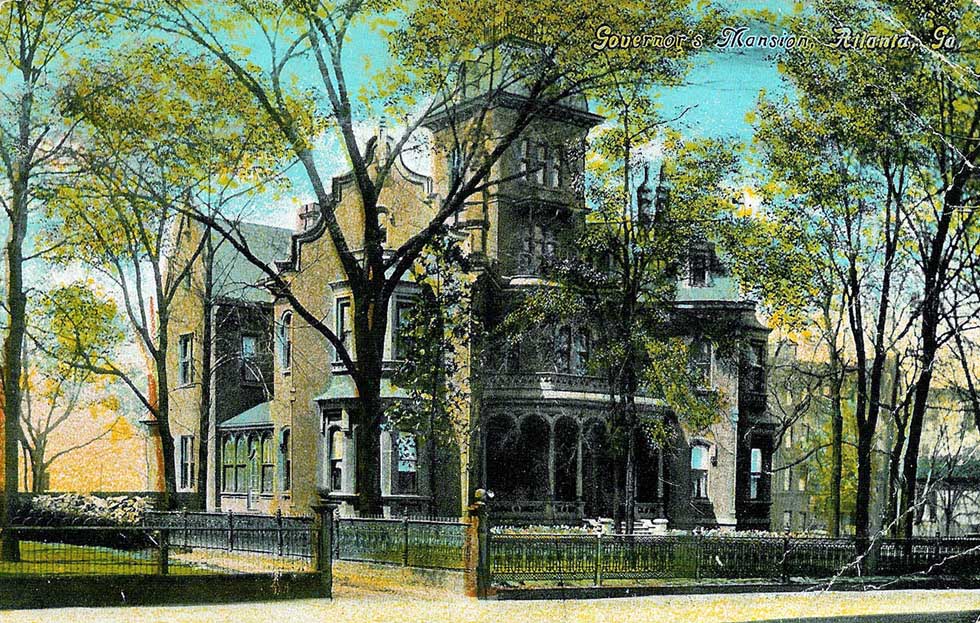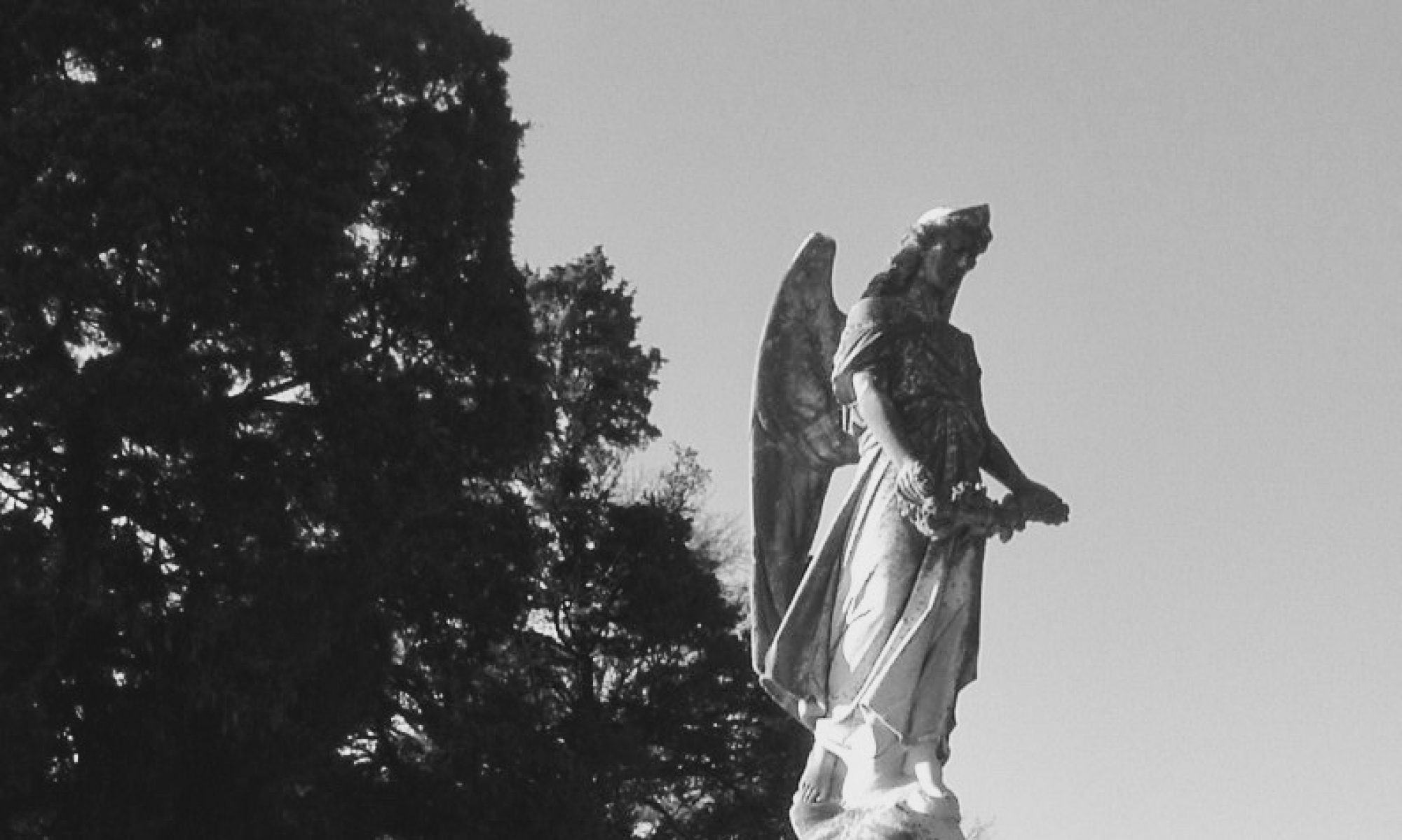N.B. This article was originally published as part of “Apparitions of Atlanta,” 28 October 2013.
There was a time when even the august pages of The New York Times published ghost stories. In 1908, this curious item appeared:
The New York Times
2 June 1908
GHOST IN GOVERNOR’S HOUSE
__________
Wife and Daughter of Gov. Smith of
Georgia Say They Saw It.
Special to the The New York Times
ATLANTA, Ga., June 1.—The ghostly gray-garbed figure of a young woman, which appears at all hours of the night, is causing the inmates of the Executive Mansion of Georgia much perturbation.
Gov. Smith is away nearly all the times engaged in a heated contest for re-election, and the mysterious ghost has been appearing to Mrs. Smith and her daughters.
The gray-garbed lady is said to be young and very beautiful. She was first seen by Miss Mary Brent Smith about three weeks ago, about 12 o’clock at night, as the latter returned to the mansion. When Miss Smith entered that hall she noticed the gray figure before a long mirror. Miss Smith approached, but the figure melted away.
Miss Smith in alarm told her mother, but the latter ridiculed her daughter. A few nights later, as Mrs. Smith and her daughter were together, the gray-gowned woman appeared to both of them. Mrs. Smith and her daughter were so overcome they fainted. To a physician Mrs. Smith related the story of the vision. Since then it is said the ghostly woman has appeared frequently.
The negroes say the figure is the ghost of Miss Price, the niece of Gov. A. D. Candler, who died in the mansion when her uncle was Governor. It is said Miss Price was very happy in the mansion, and when dying said she would revisit the place, where she was so happy while in this life.

There are several interesting things to note about this article, first off, I find it interesting that the residents of the Governor’s Mansion are referred to as “inmates,” perhaps it reflects on the status of women in this period? Secondly, it’s noted that the lowly, unnamed reporter who wrote this story evidently sought out local African-Americans to comment on the apparition, something that doesn’t often happen with articles of this time.
As for the historical context of this article, the governor in this article is Hoke Smith, who made his name as the owner of the Atlanta Journal. During that time he used his position to back Grover Cleveland during the presidential election of 1892. Following his election to the presidency, Cleveland appointed Smith as Secretary of the Interior. Returning to Georgia in 1896 after serving as secretary, he allied himself with the now notorious populist firebrand politician, Tom Watson. Smith was elected governor in 1907.

While he worked hard to appease Watson by disenfranchising the vote of African-American Georgians, Watson was still not pleased and in 1908 threw his support behind Joseph M. Brown, son of Georgia’s Civil War governor, Joseph E. Brown, thus necessitating long absences from his wife and the governor’s mansion.
The spirit is identified as Miss Price, the niece of Governor Allen D. Candler. A search of period papers brought up a notice of Miss Alice Price being ill on January 4, 1899. Ten days later, on January 14, there is a notice that Miss Price passed away. She was related to the governor through his wife and was visiting from Macon “to assist with the social honors at the executive mansion.”

Notably, young Miss Price died from typhoid fever which, according to the paper, she acquired from poor sanitation at the governor’s mansion.
The illness of Miss Price was caused by the poor sanitary arrangements which existed in the executive mansion at the time of Governor Candler’s inauguration. Before the days of the Atlanta waterworks a windmill supplied the mansion with water, the pipes being distributed through the house from a tank.
When the windmill was discontinued this tank was allowed to remain, and it is thought the decaying wood caused the illness of the young lady. After she became ill plumbers were put to work, and the water now reaches the mansion without passing through the tank.

This indicates a misunderstanding of how typhoid is spread. Decaying wood does not cause typhoid, it is spread by water contaminated with human fecal material from someone carrying the bacteria, which speaks to the early problems of water utilities and sanitation. It should also be noted that the governor’s mansion was torn down in 1923 because of the building’s poor condition. The site of the old mansion is now occupied by the Westin Peachtree Plaza at 210 Peachtree Street, NW.

This house is not the first Georgia governor’s mansion to be haunted, the Old Governor’s Mansion in Milledgeville is also known to be haunted.
Sources
- “Ghost in Governor’s House.” New York Times. 2 June 1908.
- Maysilles, Duncan. “Hoke Smith (1855-1931).” New Georgia Encyclopedia. 22 August 2013.
- “Miss Alice Price Died Yesterday.” Atlanta Constitution. 14 January 1899.
- “The Sick List.” Atlanta Constitution. 4 January 1899.
